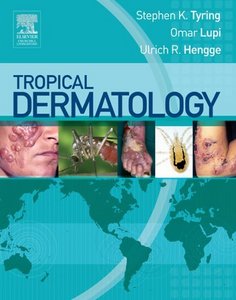Tropical Dermatology
Ch r ,ch .l L g s to .e | ISBN: 0443067902 | 2005-05-06 | PDF | 528 pages | 134 Mb
This is a guide to the mucocutaneous manifestations of tropical diseases. Introductory chapters offer an overview of syndromal tropical dermatology and discuss issues for travelers and those working in the tropics. Protozoa, helminths, viral infections, fungal infections, bacterial infections, and ectoparasitic diseases are then covered, including discussions of epidemiology, diagnosis, differential diagnosis, pathology, laboratory tests, management, and prevention. Non- infectious conditions are also considered in chapters on nutritional diseases, fogo selvagem, pigmentary disorders, and environmental causes of dermatitis.
Labels: DERMATOLOGY, FREE MEDICAL BOOKS









